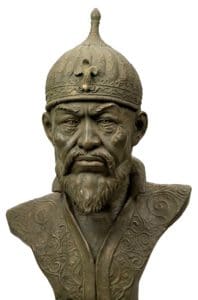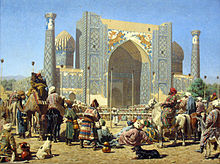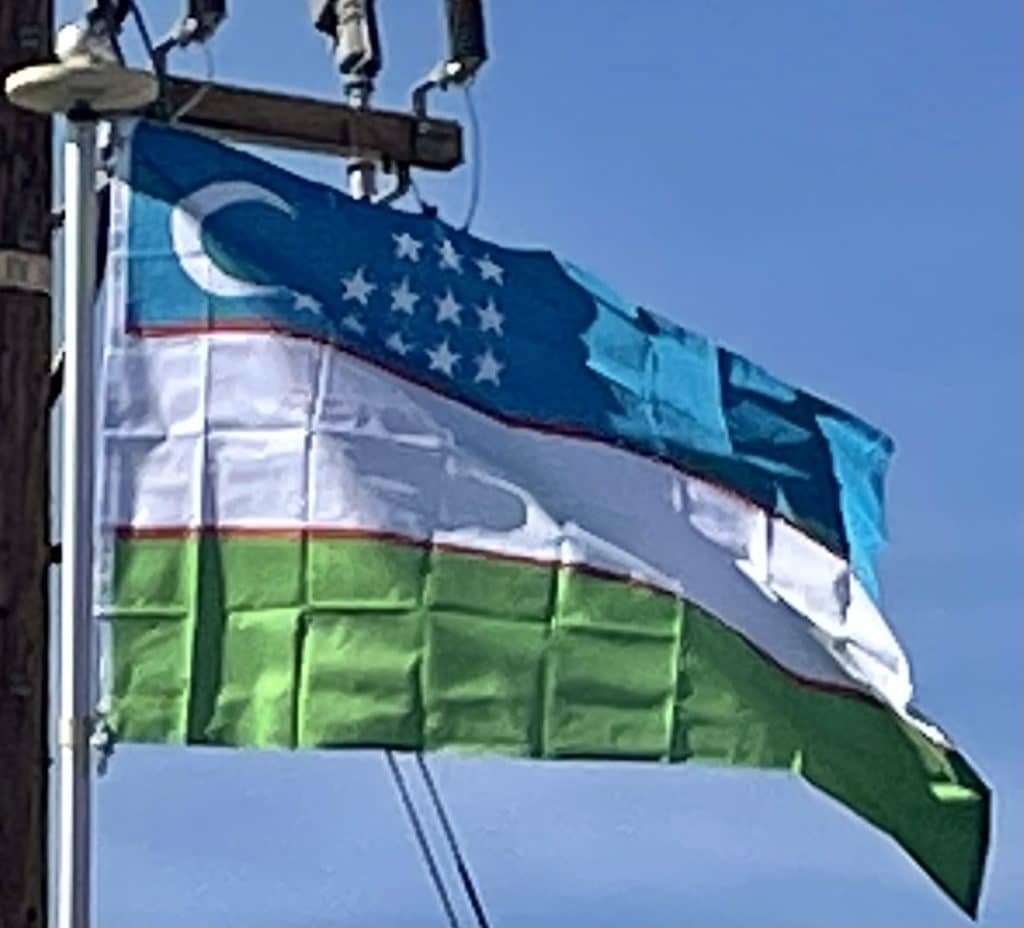Following the death of Genghis Khan in 1227, his empire was divided among his four sons and his family members. Despite the potential for serious fragmentation, the Mongol law of the Mongol Empire maintained orderly succession for several more generations, and control of most of Transoxiana stayed in the hands of the direct descendants of Chagatai Khan, the second son of Genghis Khan. Orderly succession, prosperity, and internal peace prevailed in the Chaghatai lands, and the Mongol Empire as a whole remained a strong and united kingdom (Ulus Batiy, Sattarkhan).
During this period, most of present Uzbekistan was part of the Chagatai Khanate except Khwarezm was part of the Golden Horde. After the decline of the Golden Horde, Khwarezm was briefly ruled by the Sufi Dynasty till Timur’s conquest of it in 1388. Sufids rules Khwarezm as vassals of alternatively Timurids, Golden Horde and Uzbek Khanate till Persian occupation in 1510.

In the early 14th century, however, as the empire began to break up into its constituent parts, the Chaghatai territory was disrupted as the princes of various tribal groups competed for influence. One tribal chieftain, Timur (Tamerlane), emerged from these struggles in the 1380s as the dominant force in Transoxiana. Although, he was not a descendant of Genghis Khan, Timur became the de facto ruler of Transoxiana and proceeded to conquer all of western Central Asia, Iran, the Caucasus, Mesopotamia, Asia Minor, and the southern steppe region north of the Aral Sea. He also invaded Russia before dying during an invasion of China in 1405.
Timur was known for his extreme brutality and his conquests were accompanied by genocidal massacres in the cities he occupied.
Timur initiated the last flowering of Transoxiana by gathering together numerous artisans and scholars from the vast lands he had conquered into his capital, Samarqand, thus imbuing his empire with a rich Perso-Islamic culture. During his reign and the reigns of his immediate descendants, a wide range of religious and palatial construction masterpieces were undertaken in Samarqand and other population centers. Amir Timur initiated an exchange of medical discoveries and patronized physicians, scientists and artists from the neighboring regions such as India; His grandson Ulugh Beg was one of the world’s first great astronomers. It was during the Timurid dynasty that Turkic, in the form of the Chaghatai dialect, became a literary language in its own right in Transoxiana, although the Timurids were Persianate in nature. The greatest Chaghataid writer, Ali-Shir Nava’i, was active in the city of Herat (now in northwestern Afghanistan) in the second half of the 15th century.
The Timurid state quickly split in half after the death of Timur. The chronic internal fighting of the Timurids attracted the attention of the Uzbek nomadic tribes living to the north of the Aral Sea. In 1501, the Uzbek forces began a wholesale invasion of Transoxiana. The slave trade in the Khanate of Bukhara became prominent and was firmly established. Before the arrival of the Russians, present Uzbekistan was divided between Emirate of Bukhara and khanates of Khiva and Kokand.

In the 19th century, the Russian Empire began to expand and spread into Central Asia. There were 210,306 Russians living in Uzbekistan in 1912. The “Great Game” period is generally regarded as running from approximately 1813 to the Anglo-Russian Convention of 1907. A second, less intensive phase followed the Bolshevik Revolution of 1917. At the start of the 19th century, there were some 3,200 kilometres (2,000 mi) separating British India and the outlying regions of Tsarist Russia. Much of the land between was unmapped.
